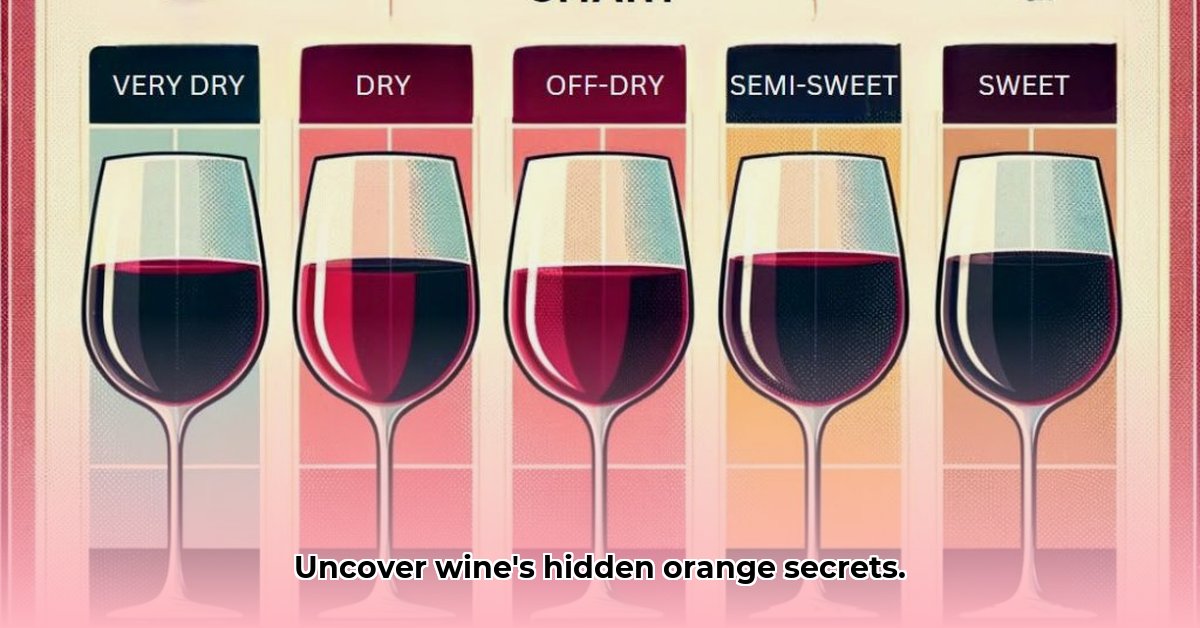Ever wondered about those captivating, sometimes amber-hued wines called “orange wine”? They’re not made from oranges, of course! This isn’t just another wine trend; it’s a fascinating ancient technique that’s making a big comeback. We’ll explore the world of skin-contact winemaking, from its surprising history to the secrets behind its unique flavors and colors. Whether you’re a winemaker, a retailer, or simply a curious wine drinker, this guide will demystify the process, offering tips and insights to help you understand, appreciate, and even create these intriguing bottles. Let’s dive in and uncover the magic behind skin-contact wines.
Wine Skin Contact: Unveiling the Secrets of Amber Wines
Let’s dive into the fascinating world of wine skin contact – a technique that’s anything but new, despite the recent surge in popularity. Forget the somewhat misleading term “orange wine”—this method offers a much wider range of colors and flavors than that simple label suggests. We’re talking about a winemaking technique with ancient roots, a history as rich and complex as the wines it produces. Exploring these hidden gems, we will unearth the art of orange wine creation.
A Journey Through Time: The Ancient Art of Skin-Contact Winemaking
Believe it or not, skin-contact winemaking isn’t a modern invention. It’s ancient! Georgia, a country often considered the birthplace of viticulture, boasts a tradition of this method stretching back millennia. Imagine: generations of winemakers, carefully nurturing their grapes and employing this technique with incredible precision using traditional clay vessels known as qvevri. Their time-honored methods form the foundation of what we now often call the “orange wine” movement. But these wines extend far beyond a single color, as we’ll soon see. The deep cultural roots of this practice shape the flavors we savor today.
Decoding the Process: How Skin Contact Magic Happens
What exactly is skin-contact winemaking? Simply put, it’s a process where the juice from white grapes stays in contact with their skins, seeds, and sometimes even stems for a significant period – anything from a few hours to several months. This is a stark contrast to the conventional white wine process, where those skins are separated immediately. The length of this “maceration,” as winemakers call it, is absolutely critical. It’s the secret ingredient that dramatically impacts the final wine’s flavor intensity, color depth, and the amount of tannins present. Think of it as a slow-cooked stew: longer contact time creates a richer, more complex final product. Consider the temperature during maceration, since it plays a vital role in crafting each uniquely flavored vintage.
Several factors influence the end result. The type of grape plays a key role; different varieties react differently to extended skin contact. The temperature during this maceration process also matters, as does the type of yeast used for fermentation. Some winemakers choose to use wild, naturally occurring yeasts (spontaneous fermentation), while others opt for specific yeast strains (inoculated fermentation). Careful monitoring and the right equipment are essential for creating a balanced, delicious wine.
The Unexpected Palette: Colors, Aromas, and Flavors Beyond “Orange”
The outcome of this process? An astonishing array of wines, defying the limitations of the “orange wine” label. The color alone can range from a pale straw hue to a deep amber, sometimes with hints of copper or even reddish tones. The aromas are similarly complex, unfolding with notes of dried apricot and orange peel, blending seamlessly with hints of marjoram, chamomile, and intriguing earthy undertones. On the palate, you’ll often experience a rich, textural experience, frequently marked by tannins that provide a firm, structured backbone. These wines often boast layered flavors that linger long after you’ve taken your last sip. Therefore, don’t let the name “orange wine” fool you; these amber wines are packed with nuance.
Navigating the Market: Overcoming Misconceptions and Educating Consumers
Skin-contact wines are undeniably gaining popularity, but challenges remain. The term “orange wine,” although catchy, can be misleading. It can create confusion, leading consumers to expect a uniformly colored and flavored wine, when reality is far more nuanced. We need clearer communication and more effective education. We need to highlight the incredible diversity of flavors and textures these wines offer – a far cry from what a simple color descriptor implies. How can winemakers, retailers, and consumers work together to ensure a better understanding of this exciting category? By embracing effective marketing, producers can see their product flying off the shelves.
Actionable Advice: A Guide for Producers, Retailers, and Consumers
Here’s some advice for everyone involved in the wine skin contact journey:
| Stakeholder | Short-Term Actions | Long-Term Strategies |
|---|---|---|
| Producers | Experiment with maceration times and grape varieties. Invest in clear, informative labels. | Develop sustainable practices. Explore niche markets and build strong relationships with distributors. |
| Retailers/Distributors | Showcase the diverse characteristics of these wines. Provide detailed tasting notes and pairing suggestions. | Train staff to confidently explain skin-contact winemaking. Expand your selection to provide greater diversity. |
| Consumers | Explore a range of skin-contact wines to uncover your preferences. Investigate food pairing possibilities. | Support producers who prioritize sustainability. Spread the word about your positive discoveries! |
The Future of Skin-Contact Wines: A Look Ahead
The future for skin-contact wines looks bright. Consumer interest is growing, with more people searching for unique and complex drinking experiences. As this demand increases, we can expect this ancient technique to remain a vital part of the wine world. Continued innovation, accessible education, and a responsible approach to production are all crucial for shaping this promising future. The journey of skin-contact winemaking is a fantastic example of the enduring power of tradition gracefully blending with the exciting possibilities of experimentation and creative exploration—a testament to the ever-evolving world of wine. So, what exciting innovations will shape the next vintage?
How to Choose the Best Orange Wine for My Palate
Key Takeaways:
- Orange wines, also known as amber wines or skin-contact wines, offer a unique flavor profile distinct from both red and white wines.
- Their production involves extended skin contact during fermentation, a technique with ancient origins in Georgia.
- Modern production thrives in regions like Italy’s Friuli, Slovenia, and Austria.
- Flavors range from stone fruit and citrus to honey, spice, and savory notes, depending on grape varietal and maceration time.
- Successfully navigating the world of orange wine requires understanding its diverse styles and appreciating nuances beyond typical white wine expectations.
Understanding the “Orange” Enigma
Let’s be clear: “Orange wine” is a convenient label, not a precise descriptor. It refers to wines made using skin-contact techniques, a method where grape skins remain in contact with the juice during fermentation, influencing both color and flavor. This process, far from being a recent invention, has deep historical roots. Keep in mind that “orange wine” is a generalized term that encompasses a wide variety of flavors.
A Journey Through Time: Ancient Techniques, Modern Revival
Georgia’s ancient winemaking traditions are the cornerstone of this story. For millennia, Georgian winemakers have used qvevri, large clay vessels, for fermenting their wines with extended skin contact. This ancestral method gave rise to amber-hued wines with complex flavor profiles. Modern winemakers, inspired by this technique, have revived and refined skin-contact practices globally, resulting in a resurgence of interest in these distinctive wines. Therefore, understanding this wine’s cultural significance deepens the experience of drinking it.
The Art of Maceration: Variables That Shape the Wine
Skin contact is the defining factor. But maceration—the period of skin contact—is not the only important variable. The type of grape, the region where it’s grown, and the winemaker’s approach all play crucial roles in shaping the final product. Shorter maceration periods yield lighter, brighter wines; longer macerations result in more intense color, bolder flavors, and a more tannic structure. Consider the winemaker’s expertise since it greatly impacts the final result.
Deciphering the Flavor Landscape: From Delicate to Bold
The flavor profiles of orange wines are as diverse as the grapes and winemaking techniques employed. Imagine a spectrum: On one end, you’ll find delicate expressions featuring stone fruit and citrus notes, echoing traditional white wines but with a subtle earthy undertone. On the other, you encounter bolder wines with pronounced spice, honey, and even savory characteristics—a testament to the extended maceration. With such a wide variety of flavor profiles, there is an ideal orange wine for every palate.
How to Choose the Best Orange Wine for My Palate: A Practical Guide
Choosing your perfect orange wine is about exploration and mindful selection. Here’s how to navigate this exciting world:
- Consider Flavour Preferences: Do you prefer lighter, brighter styles with citrus notes, or rich, complex wines with intense spice and savory elements?
- Explore Varietals: Different grape varietals (e.g., Pinot Gris, Ribolla Gialla) yield unique flavor characteristics. Research what varietals excite you.
- Read Tasting Notes: Pay attention to the tasting notes provided. Look for descriptions that resonate with your flavor preferences (herbal, citrusy, savory, etc
- How to Stop Apps From Running in the Background to Boost Your - December 1, 2025
- How To Move Apps On Your Droid For Better Organization - November 30, 2025
- How to Move Apps on Android for Better Organization - November 29, 2025










